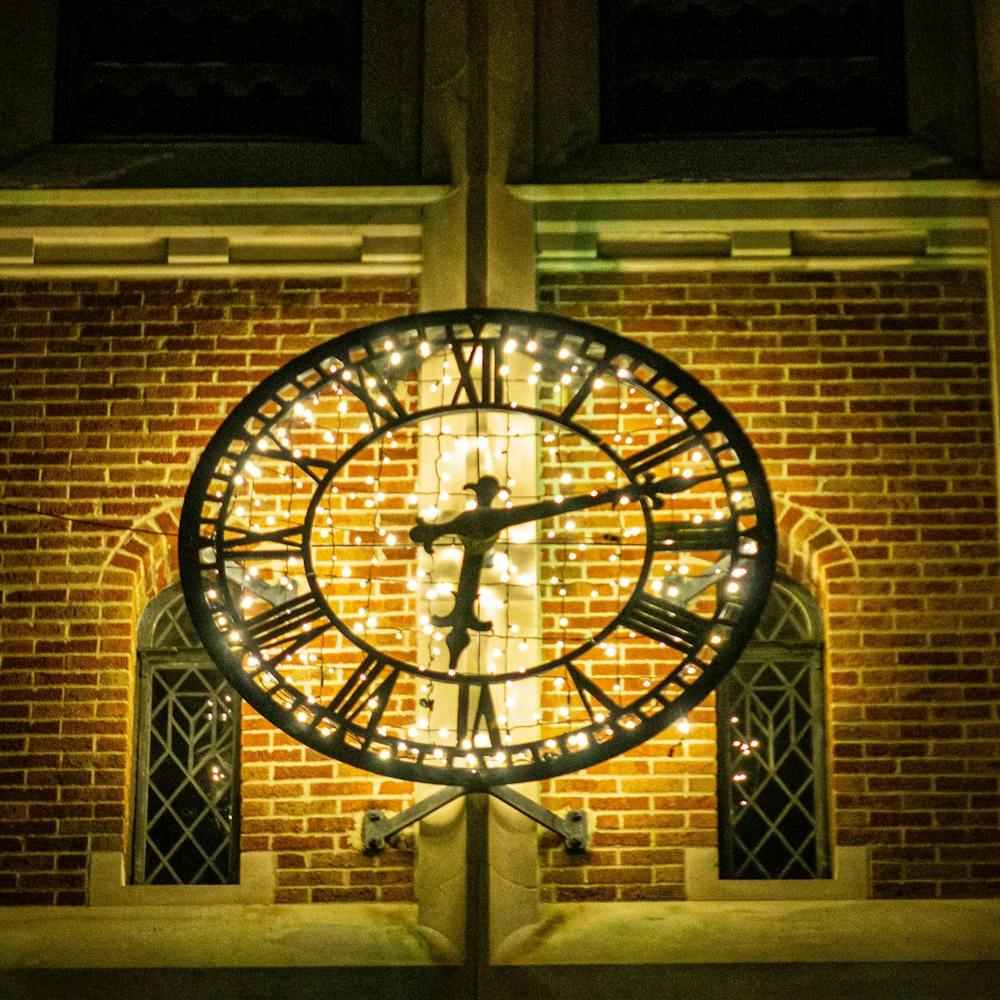“I saw the building was being renovated and as soon as I saw it, instantly it clicked — I knew this was the spot,” Miller said. “We committed to the building the next day.”
Miller bought the property in Lansing’s only historic district, where giving old buildings new life is the common theme.
Because of this, the Old Town district has an atmosphere unlike any in other parts of the capital area and, after almost a year of calling the area home, Miller still can’t put his finger on the specific feeling Old Town possesses.
“I don’t know, it’s something that existed before I got here,” Miller said. “I’m not exactly sure what the root of it is, honestly it’s like a family here.”
And, despite the ups and downs north Lansing has experienced in its recent history, it has overcome problems other neighborhoods still struggle with, offering a breath of fresh air for students who want to experience something different than just an 11-minute car ride away from campus.
From the ashes
In Old Town, each business tells a different story.
Some businesses used to be general stores, and at one point some were gas stations, but one thing they all have in common is a troubled past.
“When we discovered this place … the area was just working itself out of some pretty rough times,” Preuss Pets, 1127 N. Cedar Street, owner Rick Preuss said. “The heyday of Old Town would have been in the ‘30s, ‘40s and ‘50s. In the ‘60s, things started getting rough around here. In the ‘70s, it took a dive and for the ‘80s and ‘90s, it was a dangerous place and a difficult situation.”
During that time — when the 90 percent of buildings were vacant — local artist Robert Busby and some others set out on mission to bring Old Town back to life by buying many of the properties and repurposing them into usable business spaces.
“A group of people came together, (and worked) really hard to revitalize Lansing in 1996,” Communications Director of the Old Town Commercial Association Danielle Cooke said. “It (was) a lot of people working together and believing in the area, believing in the city again.”
Since then, vacancy has decreased by 80 percent, and Cooke said continued efforts by volunteers and passionate members of the community have worked to actively spread the word about the newly rejuvenated town, now home to over 100 businesses.
Old Town also hosts 111 events each year, according the association, and some of its bigger events like Oktoberfest — happening Oct. 5 and 6 this year — bring thousands to the area.
Oktoberfest, an event that features authentic German music, food and beer, is one of three fundraising events the Old Town Commercial Association puts on each year to keep the Old Town operating.
The Festivals of the Sun and Moon, which take place during the summer, as well as Oktoberfest, are completely run by volunteers, meaning nearly all the profits go to maintaining the neighborhood’s infrastructure.
Open arms
In addition to festivals held during the year, one of the primary ways Old Town businesses gain clientele is by word of mouth; business owners say most recommendations come from their neighboring businesses.
Old Town business owners often take every opportunity to tell customers about other shops in town and try to support each other, Grace Boutique owner Summer Schriner said.
“There’s something really nice about knowing that when you’re in a neighborhood, that your neighboring businesses aren’t trying to compete with you, they’re trying to support you,” Schriner said. “(That’s) a very unique thing from what I hear from other business owners in different areas.”
For Sean Johnson, owner of Meat — a barbecue restaurant that has called Old Town home since June — north Lansing served as a good place to open his first business for both economical and supportive reasons.
Support student media!
Please consider donating to The State News and help fund the future of journalism.
“Part of it was the charm of (the location), for what we were trying to do,” Johnson said. “Everyone around here looks out for each other; it’s a good community for a first business.”
Another factor that ties many of the businesses in the north Lansing neighborhood together is their commitment to environmental sustainability, mainly repurposing old buildings instead of building new ones.
Many businesses also sell products that promote the local economy.
Artie’s Filling Station buys their milk from a local dairy farm, and floral shop and boutique Tallulah’s Folly features art and trinkets made by Michigan-based artists.
“Although (sustainability) was important to me before, I never grasped the full concept of it until I moved to an area like this,” Tallulah’s Folly owner David Gregware said. “Without contributing to it and making a conscious effort to shop that way and look for repurposed things… places like this just aren’t going to exist. I think it’s a real comeback.”
Gregware moved Tallulah’s Folly, 1220 Turner St., which started as a floral shop in another part of Lansing, to an abandoned garage in Old Town because he saw it as a place to start over and become more independent.
His shop, where shoppers are greeted by his gray tiger-striped cat Miss Kitty, completely transformed once they moved to Old Town — partially because Gregware had more space, but also because he was inspired by his surroundings.
“Old Town is a melting pot for everything unique and individualized,” Gregware said. “None of these shops you see here are in downtown Lansing … you’re not going to find anything like this.”
Old-fashioned
Downtown East Lansing is a far cry from Old Town’s quaint storefronts, made of weathered bricks and accentuated by colorful awnings and porcelain lawn gnomes.
Part of the reason East Lansing leans toward higher-density, nationally owned retail unlike the locally owned, small businesses Old Town offers is mainly because of the drastic difference in the two communities, East Lansing Planning and Community Development Director Tim Dempsey said.
East Lansing is a college town, where the businesses cater toward students who crave the consistency chain restaurants offer rather than individuality smaller restaurants, such as Meat, bring to the table.
“We’ve had a number of independent restaurants come and go over time,” Dempsey said. “But the challenge of independent businesses is to separate and make themselves distinct. One of the things chains do very well is provide a consistent product, if you go into a chain, if you like it or not, (it’s) pretty consistent … people rely on that consistency.”
Another reason why East Lansing focuses on large-scale developments is because of the sheer volume of people living here, and the need for bigger buildings and businesses, Dempsey
said.
“There’s not much demand in Old Town area for housing,” Dempsey said. “They’ve done a great job with retail and some housing development, but (in East Lansing) the interest from developers is to do higher-density projects.”
Journalism junior Maddie Fetchiet said despite Old Town’s local charms, sustainable and locally owned businesses often ask for higher prices, which would deter students on tight budgets.
“I don’t think Old Town has the best type of attractions for students,” Fetchiet said. “I don’t know if they could afford $100 to drop on art.”
For business Footgear, 108 Division St., which has had a place in downtown East Lansing for more than 30 years, its biggest competition doesn’t have a larger rental space, or even a storefront — manager Chad Freehauf said the rough economy that all businesses in the country are facing is Footgear’s biggest competitor.
“We have the same competition everyone faces, which is the struggling economy,” Freehauf said. “You have to try to do more with what you’ve got.”
Despite the tough economic times, Schriner said the Old Town community was built up by hardworking people, and she doesn’t see anyone stopping.
“Every year I notice it getting a little bit more like that hustle and bustle, arts and entertainment district everyone wants it to be,” Schriner said. “I’ve always loved that about this neighborhood … It’s a little bit rough around the edges, but in a fantastic way.”
Discussion
Share and discuss “Diamond in the rough” on social media.






